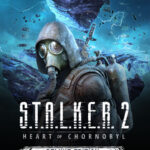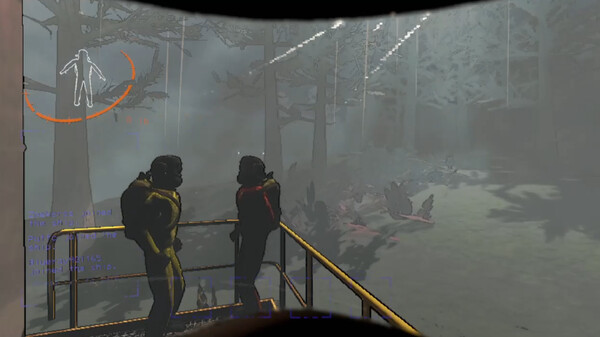Schedule 1: Outwit, Outrun, and Outlast in a Futuristic Tactical Survival
Introduction: Strategy Meets Survival in a Dystopian Future
Schedule 1 is a sleek, fast-paced indie tactical survival game developed by Voxelgram Studios. Set in a neon-lit world of corporate espionage and AI surveillance, you control a team of operatives attempting to complete missions while evading omnipresent systems. With its blend of real-time stealth, turn-based tactics, and limited resources, Schedule 1 challenges your wits more than your reflexes.
But can this minimalist tactical experience hold its own in a world of deep strategy games and action-heavy stealth titles? Let’s dive into every major aspect of Schedule 1 to see whether this underground release deserves a spot on your radar.
1. Visual Style and Presentation
Clean and Cyberpunk
Schedule 1 boasts a distinct visual identity: sharp pixel art fused with a neon-drenched UI. Its top-down perspective gives it a tactical overview vibe, reminiscent of classic titles like Syndicate or Frozen Synapse, while maintaining a futuristic, corporate noir atmosphere.
Efficient Interface
Everything is minimal but purposeful. The game favors functional clarity over flashy effects. Menus are sharp, legible, and fast to navigate—perfect for a game where each decision counts.
Pros:
-
Unique cyberpunk-inspired pixel art
-
Streamlined, no-frills user interface
Cons:
-
Static environments
-
Limited animation variety
2. Core Gameplay Loop: Plan, Move, Survive
High-Stakes Tactical Planning
At its heart, Schedule 1 is about planning under pressure. Missions involve infiltration, data retrieval, and escape—often within strict time or movement limits. You assign actions to each team member, queueing their moves before watching the turn play out.
Cause and Consequence
Enemy AI is reactive and deadly. One false step can lead to cascading failures. Success hinges on prediction, timing, and maximizing limited tools like cloaks, decoys, and signal jammers.
Pros:
-
Deep tactical decision-making
-
Tense, rewarding missions with emergent strategies
Cons:
-
Punishing difficulty for newcomers
-
Can feel rigid in longer missions
3. Tactical System: Brains Over Brawn
No Combat, All Strategy
Unlike many tactics games, Schedule 1 focuses purely on non-lethal stealth and manipulation. You’re not fighting guards—you’re outsmarting them. You’ll reroute cameras, bypass firewalls, and choreograph movement down to the tile.
Smart Tools, Smarter Enemies
As levels progress, new tools and enemy types are introduced. Drones, pressure plates, and patrol routines require precise countermeasures. The sandbox-like systems allow for creative solutions without becoming overwhelming.
Pros:
-
Encourages clever, non-violent problem solving
-
Great variety of tools and obstacles
Cons:
-
Steep learning curve
-
Mistakes are harsh and sometimes irreversible
4. Narrative and Worldbuilding
Corporate Dystopia, Subtle Lore
Schedule 1 doesn’t tell its story through cutscenes. Instead, lore is delivered via in-mission logs, intercepted messages, and background details. You piece together a narrative about rogue AI, unethical corporations, and resistance cells.
You Write the Story
With minimal dialogue, the game relies on player imagination and choices to shape the story. It’s a quiet, atmospheric approach that rewards attention but may feel sparse for those craving cinematic flair.
Pros:
-
Intriguing lore hidden in world details
-
Player-driven narrative experience
Cons:
-
Sparse storytelling may not appeal to all
-
No character development or voiced lines
5. Mission Design and Replayability
Procedural and Puzzly
Missions are semi-randomized, offering varied layouts and objectives. This ensures no two runs feel identical. Objectives range from exfiltrating an agent to hacking specific terminals—often under heavy surveillance.
Endless Possibilities
With multiple loadouts, agent perks, and branching paths, replayability is strong. You can try stealth-perfect runs or experiment with bold, high-risk plays.
Pros:
-
Procedural level variety
-
Encourages experimentation and multiple strategies
Cons:
-
Repetition can creep in without fresh objectives
-
Some missions feel more trial-and-error than tactical
6. Progression and Unlocks
Build Your Team
Between missions, you can upgrade operatives, unlock gear, and reassign roles. Each agent develops their own toolkit, making team synergy an evolving puzzle.
No Hand-Holding
Progress is earned, not given. You’ll need to scrape by early on, but upgrades feel meaningful once unlocked. You learn by failing—and that’s by design.
Pros:
-
Rewarding long-term growth
-
Encourages thoughtful loadout choices
Cons:
-
Early game can feel underpowered
-
No respec or do-over options for builds
7. Audio and Atmosphere
Chill Beats, Tense Vibes
Schedule 1 features a synth-heavy ambient soundtrack that perfectly matches its quiet tension. Sound effects are crisp and informative—letting you know when you’ve been spotted or a trap’s been triggered.
Mood Over Melody
While the soundtrack blends into the background, it does a great job of sustaining suspense. However, it lacks standout tracks or evolving themes.
Pros:
-
Immersive ambient audio
-
Sound cues enhance tactical awareness
Cons:
-
Limited musical variety
-
No voice acting or dynamic sound layers
8. Accessibility and Learning Curve
No Coding Required—Just Logic
Despite its system-heavy mechanics, Schedule 1 is surprisingly intuitive once you grasp the basics. The tutorial missions are well-paced, and the UI helps visualize consequences before committing.
Mind Over Muscle
This is a game for thinkers. If you enjoy planning ten moves ahead and adapting under pressure, it’s deeply satisfying. If not, frustration can set in quickly.
Pros:
-
Clear onboarding for a complex system
-
Teaches logic and problem-solving naturally
Cons:
-
Not for action-oriented players
-
Few accessibility settings for colorblind or hearing-impaired
9. Community and Developer Support
Active Indie Devs
Voxelgram Studios engages regularly with the community through Discord and Steam discussions. Updates are frequent, with many quality-of-life tweaks driven by player feedback.
Room to Expand
Modding tools are being considered, and the roadmap includes cooperative play and more mission types. The game is still growing, with plenty of promise ahead.
Pros:
-
Transparent, passionate developers
-
Regular patching and feature updates
Cons:
-
No multiplayer (yet)
-
Some systems still feel underdeveloped
10. Final Verdict: Should You Play Schedule 1?
Schedule 1 is a brilliant gem for fans of minimalist design, cerebral gameplay, and sci-fi stealth. It doesn’t dazzle with flashy effects or over-the-top spectacle—but it nails what it sets out to do: deliver tense, strategic infiltration gameplay in a dystopian future.
If you enjoy games like Invisible, Inc., Into the Breach, or Frozen Synapse, Schedule 1 is an instant recommendation. It’s not for everyone, but for those who enjoy planning, adapting, and outsmarting enemies in a clean, high-stakes environment, it’s a rare treat.




























